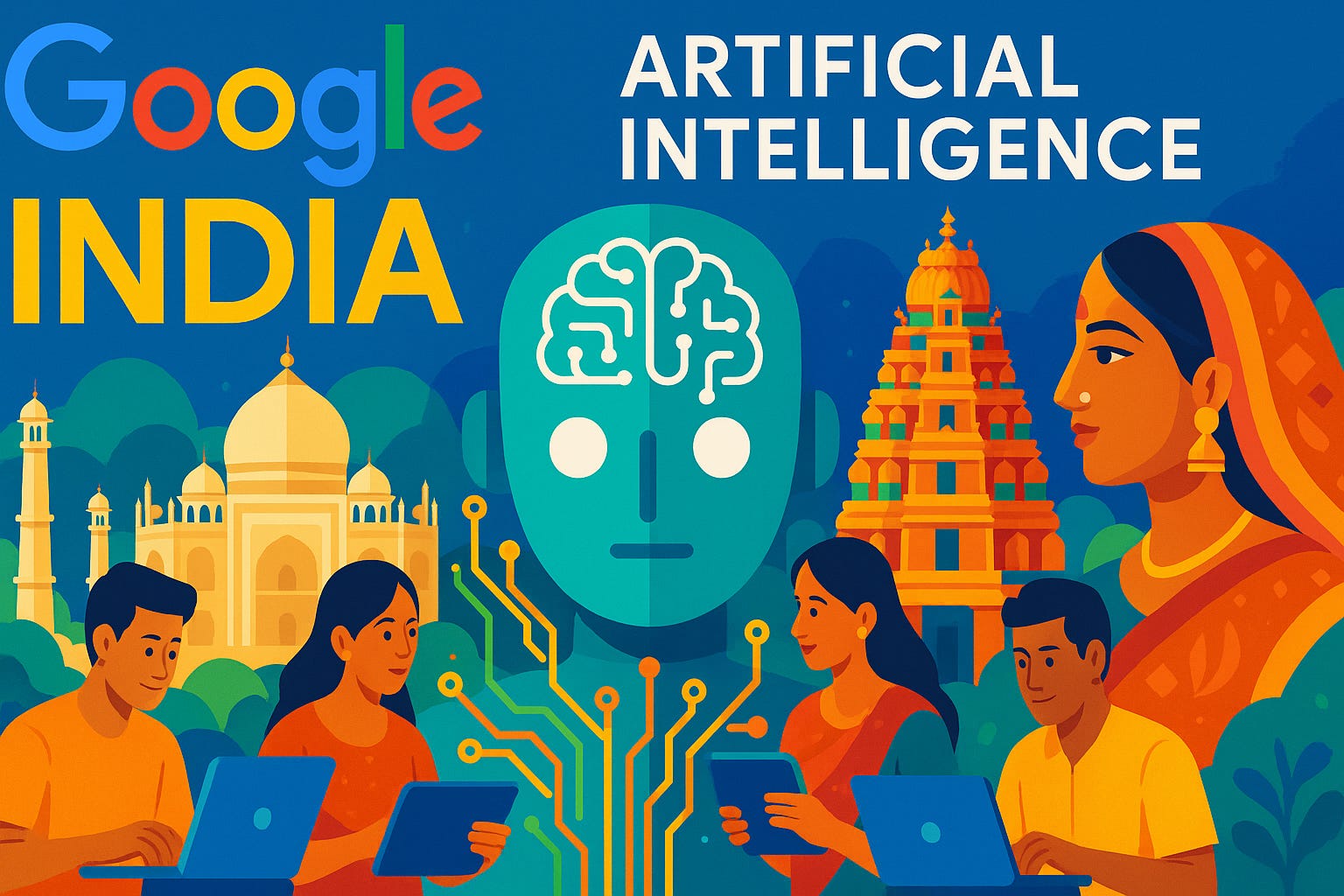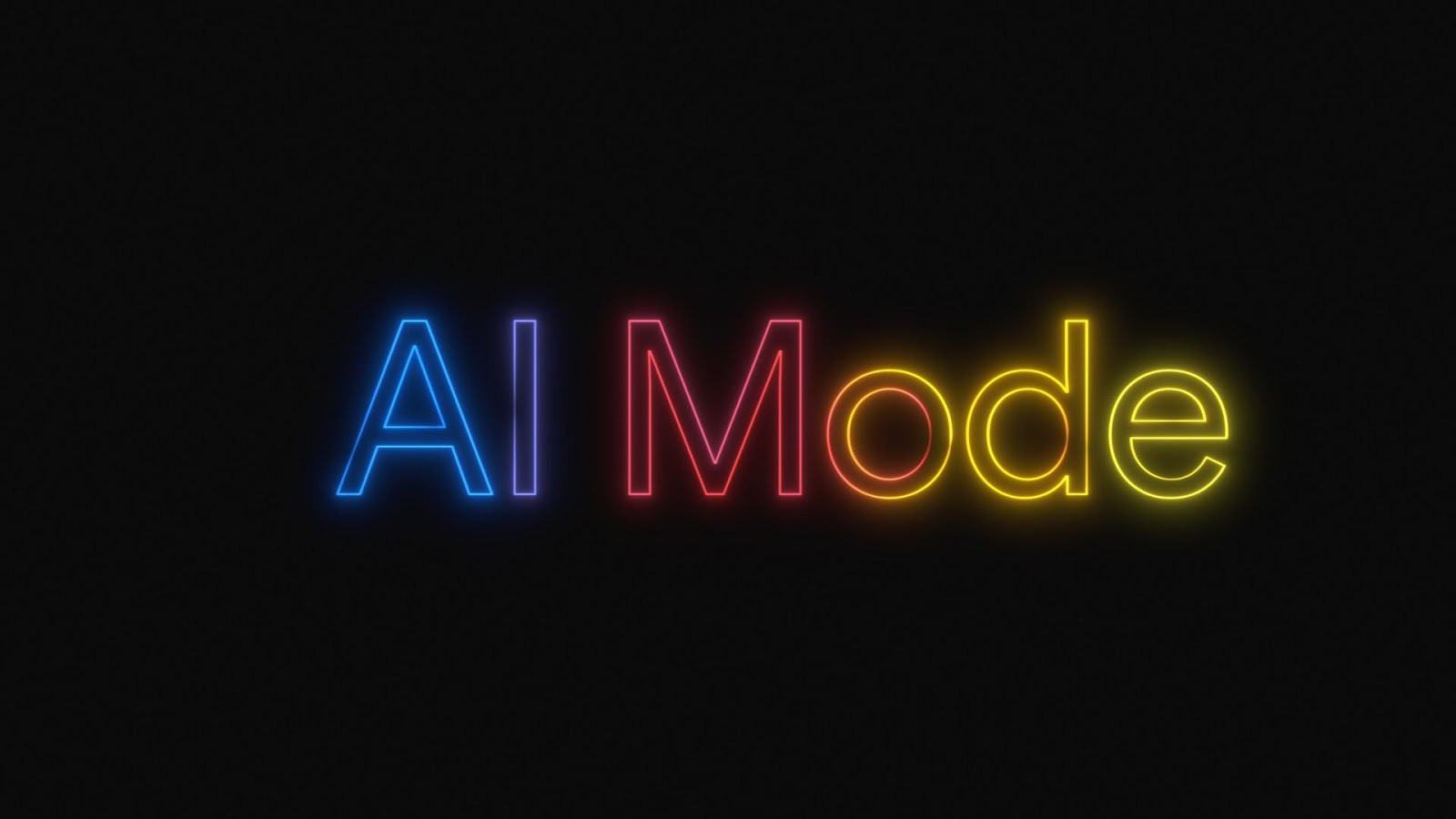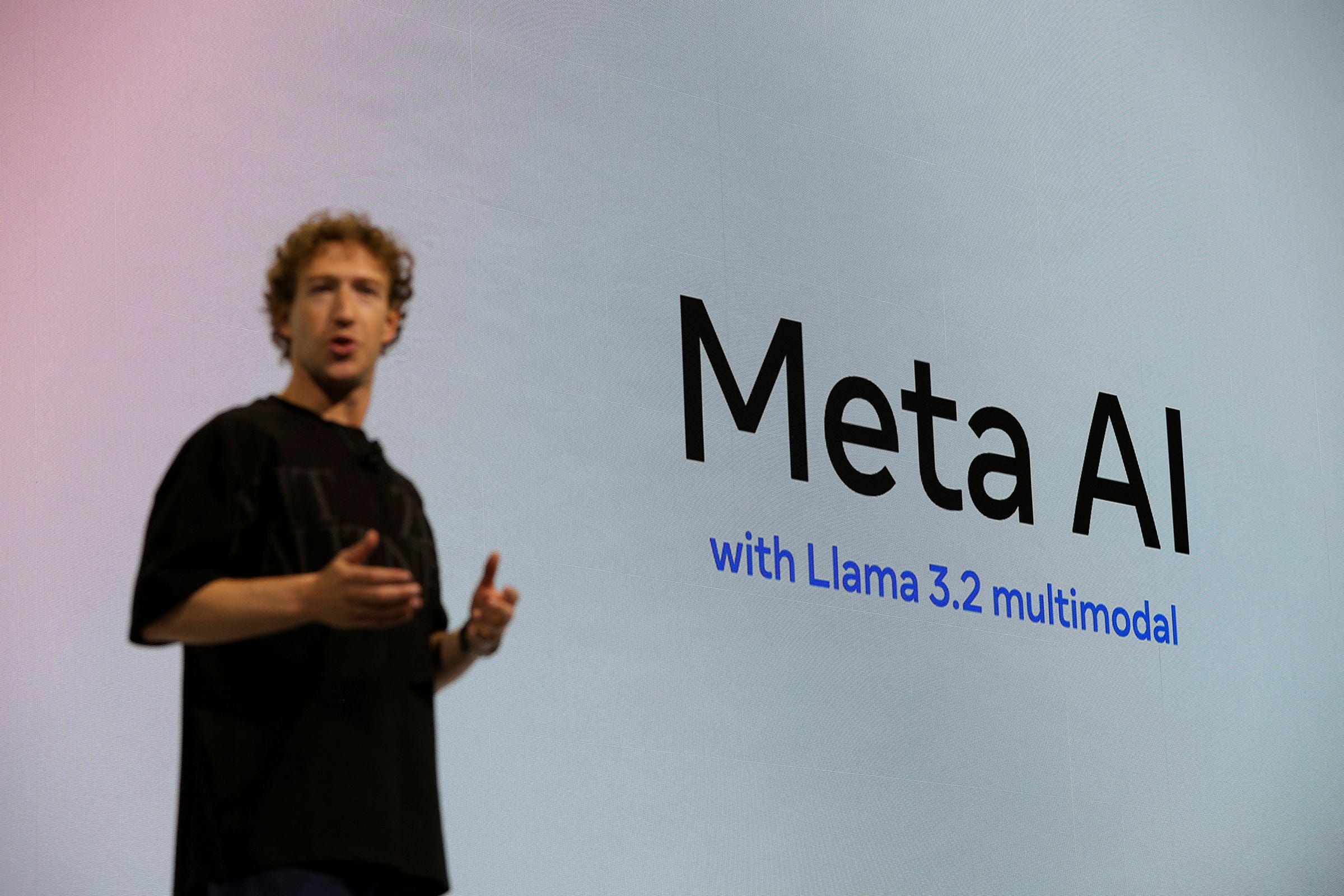🤖 Tech Talk: Google's AI Mode is available in India too. So what?
Plus: Empowering Indian businesses with free and open source software, or FOSS; AI Tool of the Week: Using AI to manage and verify multiple PDFs in complex workflows; and more.

Dear reader,
Did you know that more than 85% of India’s Internet runs on free and open source software, or FOSS? Moreover, in 2024, India became the second-largest contributor to artificial intelligence-related GitHub projects, accounting for 19.9% of global contributions—just behind the US (23.4%) and slightly ahead of Europe (19.5%), as per the Stanford University's Human-Centred Artificial Intelligence Index 2025 report released this April.
This signals India’s growing influence in the open source AI community, which is a key driver of global innovation as FOSS allows users to freely use, study, modify, and even redistribute the software.
A new study, 'The Rise of FOSS in India' by the National Law School of India University, underscores that FOSS components now comprise 70-90% of modern software systems.
Key advantages of FOSS include lower costs, improved security and reliability, and the ability to customise solutions. While challenges such as limited technical support and the need for in-house capacity exist, these are generally outweighed by the benefits.
Methodology
The study analysed FOSS adoption across organisations of varying sizes and sectors—healthcare, education, finance, and IT—including startups, non-profits, and two public sector bodies. A strong preference for FOSS was observed in most organisations’ tech stacks. Exceptions included proprietary tools for internal use, such as email and enterprise resource planning systems.
Findings
Cost savings and reduced total cost of ownership emerged as the most cited benefits. Flexibility to tailor software to organisational needs and the development of internal technical capability were also highlighted—many saw the latter as a long-term strength rather than a drawback.
Examples of FOSS include GNU/Linux, Mozilla Firefox, SugarCRM, ERPNext, Calibre, Chatwoot, Apache web server, and LibreOffice.
The Indian government announced a “policy on the adoption of open source software for the Government of India” as part of its Digital India programme in 2015. Other initiatives include the National Resource Centre for Free and Open Source Software, the GNU Compiler Collection Centre at the Indian Institute of Technology–Bombay, and the open source e-learning laboratory at the Centre for Development of Advanced Computing in Hyderabad.
But it was Kerala that gave its official support to FOSS with its State IT Policy way back in 2001, and set up the International Centre for FOSS in 2009. Other state governments that have proactively adopted FOSS include Tamil Nadu, Uttarakhand, Assam, West Bengal and Haryana, according to a report by CivicData Lab.
Further, Bharat Operating System Solutions (BOSS), a GNU/Linux-based OS, comprises several open source operating system derivatives developed by the Centre for Development of Advanced Computing in Chennai, which are meant to promote FOSS usage in India. BOSS supports 18 Indian languages.
In addition, many courts in India use Ubuntu (a Linux variant). In 2011, the Indian Supreme court moved all its activities to Ubuntu and encouraged all the other courts in the country to transition as well.
'The Rise in India FOSS' study cites more examples.
The Kerala Infrastructure and Technology for Education (KITE), a public sector body under Kerala’s education department, has integrated FOSS at more than 16,000 schools. Since 2007, it has exclusively used FOSS for ICT (information and communication technology) education, developing its own operating system (KITE-GNU-Linux) and education apps.
Its flagship Little KITES programme trains about 180,000 students annually in AI, robotics, and more. FOSS adoption, according to the study, has saved Kerala ₹300 crore annually, enabled academic freedom, and improved digital literacy.
However, challenges include device compatibility and identifying truly open source AI models.
The National Payments Corporation of India (NPCI), which powers India’s digital payment systems (including UPI, RuPay, and AadhAePS) has been using FOSS since 2015 to achieve vendor independence, scalability, and cost savings. FOSS enables NPCI to process 10 billion API calls daily with minimal latency. However, challenges include security risks, troubleshooting, and software lifecycle management amid market changes.
Likewise, India’s first discount broker, Zerodha, leverages FOSS across its tech stack to build scalable, in-house technologies while avoiding vendor lock-in. With a lean tech team of 30, Zerodha serves more than 10 million users and contributes to open source via GitHub and $1 million in annual grants.
FOSS supports agility, compliance, and cost-efficiency. However, some implementations have required rework or abandonment due to evaluation errors or discontinued support. Still, FOSS has empowered internal capability and strategic independence. You may also read: 'Why Indian startups love open source'.
However, some limitations persist. These include challenges in managing updates and patches, a shortage of skilled FOSS professionals, and weak community support in certain areas. Most organisations showed awareness of FOSS licensing and preferred permissive licences over ones that require derivative works to also be open.
The study recommends policy shifts to favour FOSS procurement, especially in government. It suggests that publicly funded software be mandatorily released as open source. Further, it advocates ICT education in schools through FOSS tools and mandatory FOSS adoption by state departments, as successfully demonstrated by Kerala. You may access the full report here.
Google's AI Mode is available in India too. So what?
In May, Google introduced a new AI Mode for Search, which it touted as "a total reimagining of Search". "With more advanced reasoning, you can ask AI Mode longer and more complex queries. In fact, early testers have been asking queries that are two to three times the length of traditional searches, and you can go further with follow-up questions. All of this is available as a new tab right in Search," Google chief executive Sundar Pichai said during his keynote address.
On 24 June, Google introduced the AI Mode to India as an experiment in Labs in English. This month, it rolled out AI Mode to everyone in India without the need for a Labs sign-up. The AI Mode in Search is now available via a dedicated tab or directly in Google app’s search bar. It brings together all the features from its experimental Labs rollout—letting users ask questions through typing, voice, or images using Google Lens. The result is a conversational experience with deeper answers, helpful links, and follow-ups.
Powered by a custom version of Gemini 2.5, AI Mode handles longer, more nuanced questions that once required multiple searches. Google reports that early users are already asking queries two to three times longer than traditional searches—an indicator that AI Mode is being used for exploratory, high-effort tasks like comparing products, trip planning, or understanding detailed how-tos.
At its core, AI Mode uses a technique called query fan-out, which breaks your question into sub-parts and issues multiple searches simultaneously. This allows Google to scan more of the web at once, surfacing deeply relevant content from across its vast index—including real-time sources like the Knowledge Graph and shopping data for billions of products.
The experience is also fully multimodal. You can use your voice to ask long questions on the go, or snap a photo using Lens to get help with what you’re seeing. For example, if you receive a new plant as a gift and want to know how to care for it, just take a picture and ask. AI Mode will identify the plant and give you detailed, step-by-step instructions, complete with links—and even let you follow up with a question like, “Where should I place it for best growth?”
This marks a major step forward from AI Overviews, which already serves over 1.5 billion users a month. In core markets like the US and India, these summaries have driven more than a 10% increase in query volume where they appear. AI Mode builds on that momentum, bringing more advanced reasoning, deeper content discovery, and a more natural, interactive way to search.
That said, is Google’s AI Mode in Search better than hybrid platforms like Perplexity, Anthropic's Claude, or Microsoft's Copilot that blend large language models (LLMs) with real-time web access?
When users search for something using Google's AI Mode, it offers a concise AI-generated summary without the need to launch a separate chat interface or type elaborate prompts. It’s integrated directly into the search flow. Google’s massive data ecosystem—YouTube, Maps, Shopping, and Flights—also gives it an edge for specific query types like “best restaurants near me” or “cheap flights to Goa this weekend”. However, there’s no conversation thread, no memory of past queries, and no room to refine a question in context. While this may suffice for quick answers and task-based lookups, it may not satisfy deeper exploration.
That’s where tools like Perplexity, ChatGPT (with browsing), Claude, and Copilot stand out. These platforms offer a more conversational, transparent experience. Perplexity, for instance, cites every source inline, making it ideal for research and verification. Claude and ChatGPT remember your previous questions and let you build on them, which is invaluable for writing, analysis, or coding. These chat-based tools are not just responding—they’re reasoning, and helping users explore topics iteratively.
Moreover, ChatGPT and Claude are increasingly multimodal, supporting files, code, and images. Microsoft’s Copilot adds further value by integrating into Office apps, offering productivity-enhancing features across Word, Excel, and Outlook.
So, much will depend on the task at hand. For fast, practical answers—like checking weather, restaurant options, or shopping comparisons—Google may work well since Google’s AI Mode is optimized for browsing, while Perplexity and the other platforms are designed for building knowledge. In short, you will have to play around to find your right companion, or combination of online companions.
AI Unlocked
by AI&Beyond, with Jaspreet Bindra and Anuj Magazine
The AI hack we have unlocked today is: Using AI to streamline multi-document PDF validations in complex processes
What's the pain point here?
In many business processes, especially in finance or legal operations, validating information across multiple PDFs is a recurring nightmare. It often means switching between documents like contracts, compliance checklists, and payment receipts—each stored in different formats, layouts, or systems. Whether it’s checking if figures match, confirming dates, or verifying signatories, these manual cross-checks are tedious, prone to human error, and almost impossible to do at scale.
For example, In large enterprises, shared service organizations often process hundreds of invoices every month, each requiring validation across multiple PDF documents. Processing invoices isn't just about checking numbers. Each invoice needs to match with a purchase order and a goods receipt note—three separate PDF files per transaction. Doing this manually is slow, error-prone, and frustrating. Manual checks delay payments, create approval bottlenecks, and lead to frequent errors in compliance and vendor reconciliation.
How can Gemini 2.5 Pro help here?
- Smart parsing: Understands complex layouts, tables, and fields across diverse document formats.
- Context memory: Maintains context across documents, helping link purchase order numbers and line items.
- Error spotting: Flags quantity mismatches, date inconsistencies, and tax calculation errors instantly.
How to access: https://gemini.google.com/
Example:
Imagine you’ve uploaded three documents related to a vendor transaction: an invoice, a purchase order, and a goods receipt note.
Prompt:
You are an accounts-payable automation expert. Help me do the invoice processing using the following framework.
Invoice processing framework:
1. Document classification and data extraction
2. Purchase order matching and validation
3. Exception identification and routing
4. Approval workflow optimisation
5. Compliance checks (GST, TDS, vendor master)
6. Payment terms validation
7. Duplicate invoice detection
8. Fraud risk assessment
Validation rules:
- 3-way matching: Purchase order, invoice, goods receipt note
- Amount tolerance: ±5 % for quantity variance
- Vendor master verification required
- GST rate validation against HSN code
- TDS calculation verification
The three documents (invoice, purchase order, goods receipt note) have been uploaded in this chat.
Process them and provide your processing recommendation.
What makes Gemini 2.5 Pro special?
- Code-free validation: Structured, domain-specific validation without writing code
- Scales easily: Designed for high-volume invoice scenarios
- Prompt ready: Plug-and-play prompt format for finance teams
If you're in finance or operations, this is one AI co-pilot worth experimenting with.
Note: The tools and analysis featured in this section demonstrated clear value based on our internal testing. Our recommendations are entirely independent and not influenced by the tool creators.
How Meta is powering its SuperIntelligence Lab
In a bid to stay competitive in the escalating AI race, Meta CEO Mark Zuckerberg has overhauled the company’s structure and powered a new SuperIntelligence Lab with 11 top researchers from rivals including OpenAI, Anthropic, Google, and DeepMind.
What’s striking is that all 11 are immigrants, and none earned their undergraduate degrees in the US. The team includes Trapit Bansal, formerly at OpenAI, whose work on logical reasoning has shaped both academic and industrial models. He holds degrees from IIT-Kanpur and UMass Amherst.
Daniel Gross, co-founder and former CEO of Safe Superintelligence Inc. (SSI), has also joined Meta’s new Superintelligence Lab, following which SSI co-founder Ilya Sutskever (also co-founder of OpenAI who exited the company last May) will now take over as SSI CEO. Gross is joined by Nat Friedman, former GitHub CEO and his longtime partner at venture firm NFDG. You may read more about the developments here.
These hires reflect Meta’s growing ambition to lead the next phase of artificial general intelligence (AGI). If you're wondering about the impact of these hires on OpenAI, you may read 'Did Meta’s talent raid force OpenAI to shut down for a week?'.
You may also want to read
Nvidia hits $4 trillion marketcap; beats Microsoft and Apple
Global chipmaking giant, Nvidia Corp.'s market capitalisation (M-cap) hit $4 trillion on Wednesday's Wall Street session after the company shares hit a fresh all-time high. The chipmaking giant crossed Apple and Microsoft's rankings to become the largest publicly listed company in terms of market value. Nvidia shares gained 2.76% during Wednesday's intraday session on the US stock market, hitting an all-time high of $164.42 on 9 July 2025, compared to $160 at the previous market close. As of 10:49 a.m. (EDT) the shares are currently trading 1.65% higher at $162.68 on the New York-based Nasdaq. Nvidia the tops the mcap leaderboard, followed by Microsoft at $3.7 trillion, and iPhone maker Apple at $3.135 trillion as of 9 July 2025.
Elon Musk, the founder of Tesla, SpaceX, and xAI, has announced significant improvements to his AI chatbot, Grok, as part of a wider strategy to challenge what he perceives as ideological bias in existing AI platforms.
In a post shared on X on 4 July, the tech billionaire stated, “We have improved @Grok significantly. You should notice a difference when you ask Grok questions.” Musk suggested that the next major release of the system, potentially named Grok 4, will feature heightened cognitive abilities. We will get you more details after the launch. You may read more about this here:
Who is Srinivas Narayanan? OpenAI VP says AI will turn coders into CEOs
Google’s EU search results could soon feature competitors first
Huaweis AI lab denies that one of its Pangu models copied Alibabas Qwen
Hope you folks have a great weekend, and your feedback will be much appreciated — just reply to this mail, and I’ll respond.
Edited by Feroze Jamal. Produced by Shashwat Mohanty.






